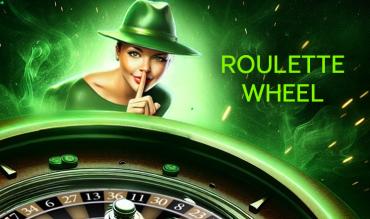It’s unthinkable to call yourself a roulette player if you don’t know about some of the following key aspects about roulette wheel numbers such as:
- How many numbers on a roulette wheel there are;
- How roulette wheels work; and;
- Understanding roulette wheel numbers as presented to players on a roulette table betting layout.
To understand more about roulette, roulette strategy, and unlocking secrets about the game continue reading.
The roulette wheel and roulette wheel numbers is the battlefield. It's the court that judges the outcome (without possibility for an appeal). It’s the court that decides the outcome of all bets (without the possibility of appeal). The difference between winning or losing often rests on the roulette ball landing on a number you have bet on, or a number on the left or right side of your bet selection.
Most regular roulette players have probably studied the physical and mechanical aspects of roulette. After all, the game is all about the roulette wheel numbers and where the ball will land.
It is unthinkable to call yourself a roulette player if you haven’t studied the physical and mechanical aspects of roulette. The wheel is the game.
A Little Bit of Roulette History
In his quest to create for a perpetual motion machine, in the 17th century, French physicist, philosopher and inventor Blaise Pascal introduced the roulette cylinder. And the game of roulette – as we know it today – started being played a century later, around 1760, in France.
Roulette Wheel Variations
For the untrained eye, there’s no difference between the types of roulette wheels out there. Roulette players need to decide whether to bet on European or American roulette games. The difference between these two main types of roulette wheels is that the American version has two zeroes on the cylinder. This gives a bigger advantage to the house.
You’d think players would avoid betting on double-zero roulette games, but there’re still plenty who still do. Most casinos in the US offer mainly double-zero roulette games. Interestingly the first roulette games introduced in France had two zeros. However, in an attempt to attract more gamblers, German casinos introduced single-zero roulette games.
Please note that as well as the different types of roulette wheels there’re also different types of tables and variations in the rules.
Let’s learn about the two main roulette wheel variants i.e. the single-zero European wheel and the double-zero American wheel.
American Roulette
How many roulette wheel numbers are there on an American wheel?
There’re a total of 38 pockets on the American roulette wheel, ranging from 0 to 36, plus the additional 00 number. 18 of these pockets are colored red. The other 18 are black and the two pockets featuring 0 and 00 are green. Regarding these pockets, they’re placed at the opposite side of the cylinder – just like consecutive numbers – and there’re no adjacent numbers of the same colour.
How many numbers on a roulette wheel with two zeros?
Starting from the one zero, the counterclockwise sequence of roulette wheel numbers on the American roulette wheel looks like this: 0, 2, 14, 35, 23, 4, 16, 33, 21, 6, 18, 31, 19, 8, 12, 29, 25, 10, 27, 00, 1, 13, 36, 24, 3, 15, 34, 22, 5, 17, 32, 20, 7, 11, 30, 26, 9 and 28.
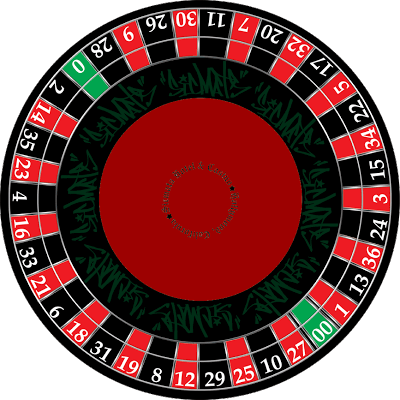
European Roulette
How many roulette wheel numbers are there on a European wheel?
The French roulette wheel (known as European roulette) has a single-zero. This is the better option for those who want to offset the effect of variance.
When playing on European single-zero roulette games, the house edge is significantly lower at 2.7% compared to the higher 5.26% on the American roulette.
How many numbers on a roulette wheel with one zero?
On the European wheel, the zero-pocket is still green and the remaining 36 pockets consist of 18 black and 18 red numbers. Starting from zero, this is how the clockwise sequence of roulette wheel numbers looks like on the European roulette wheel: 0, 32, 15, 19, 4, 21, 2, 25, 17, 34, 6, 27, 13, 36, 11, 30, 8, 23, 10, 5, 24, 16, 33, 1, 20, 14, 31, 9, 22, 18, 29, 7, 28, 12, 35, 3 and 26.
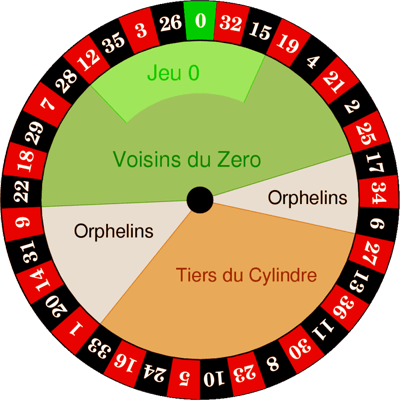
European Roulette Wheel Based Bets
There’re some specific bets that refer to the European wheel layout. After receiving the player’s betting requests the dealer places the bets on an area of the table dealer’s control. The dealer may speak the bet aloud to avoid any misunderstandings. It’s important to know that each chip must be of the same value.
The bet types are as follows:
| Zero Play |
|---|
| Roulette wheel numbers covered: 12, 35, 3, 26, 0, 32 and 15. |
| Bet: x4 chips required. |
| 1 chip on 0-3 split; |
| 1 chip on 12-15 split; |
| 1 chip on 32-35 split; and; |
| 1 chip on #26 straight up. |
| Voisins De Zero (neighbours of zero) |
|---|
| Roulette wheel numbers covered: 22, 18, 29, 7, 28, 12, 35, 3, 26, 0, 32, 15, 19, 4, 21, 2 and 25. |
| Bet: x9 chips required. |
| 2 chips on the 0-2-3 trio; |
| 1 chip on each of the five following splits: 4-7, 12-15, 18-21, 19-22, 32-35; |
| 2 chips on 25-26-28-29 corner. |
| Orphelins (orphans) |
|---|
| Roulette wheel numbers covered: 17, 34, 6, 1, 20, 14, 31 and 9 |
| Bet: x5 chips required. |
| 1 chip on #1; and; |
| 1 chip on each of the four following splits: 6-9, 14-17, 17-20, 31-34. |
| Tiers |
|---|
| Roulette wheel numbers covered: 33, 16, 24, 5, 10, 23, 8, 30, 11, 36, 13 and 27 |
| Bet: x6 chips required. |
| 1 chip on each of the six following splits: 5-8, 10-11, 13-16, 23-24, 27-30, 33-36. |
Unlike the four bet types looked at above, with the following “Neighbour” bets, the roulette player must pick a target number.
| Neighbors |
|---|
| Roulette wheel numbers covered: Five consecutive numbers on the wheel; the bettor selects the middle number “and its neighbours” and two numbers each side of the target number will also be bet on. |
| Bet: x5 chips required. |
| 1 chip straight on each of the five numbers. |
The Layout Logic of Roulette Wheel Numbers
In both American and European roulette, the order of the roulette wheel numbers on the respective wheel-tracks is different than what their arithmetic value would suggest. And they’re different for each of the two types of roulette wheels.
This is one of the secrets why roulette is such an amazingly balanced game in theory. The succession of roulette wheel numbers on the wheel is well thought out in order to accomplish the following four different affects:
1. Confuse the player. It’s very hard for the novice player to form a mental picture of the wheel and understand the relation of the roulette wheel numbers and sectors. This makes it very difficult to notice any bias or to bet on specific sectors.
Not only that, but the roulette table layout can add to the confusion. Experienced roulette players are familiar with the sequence of numbers on the wheel. Often this happens naturally from experience, but you should try to get a pretty good idea, a mental image, where roulette wheel numbers lay as soon as possible anyway.
2. The colors should alternate completely on the wheel. Two consecutive roulette wheel numbers should have different colors. This is an absolute condition for both types of wheels. Furthermore, the color distribution on the table should be as balanced as possible, but this was a much lesser concern.
3. Low (1-18) and High (19-36) roulette numbers should alternate as much as possible. For instance, on a European roulette wheel, one point where this condition is not met is the #5 next to #10. Another is #26 and #32 though these are separated by green zero.
On the American wheel there are many sectors with adjacent low numbers and adjacent high numbers. This means the numbers on the American roulette wheel aren’t as spaced out as near to perfect as is possible like we find on the European wheel.
4. Odd and even numbers should be evenly distributed around the wheel with no more than two even or odd numbers adjacent to each other.
Two Interesting Asymmetries About the European Roulette Layout
If you split the circumference in two halves from the zero. On the left side, you find all the black low numbers and all the red high numbers. On the right half are all the black high numbers with the red low numbers.
Furthermore, in the following nine number sector; 29-7-28-12-35-3-26-0-32 None of those roulette numbers are part of the second dozen 2-to-1 betting option on the table layout.
Roulette Manufacturers
Over the internet, there’s a preference for European roulette and most online roulette games use this type of wheel. However, in bricks-and-mortar casinos this is not necessarily the rule. The number of roulette wheel manufacturers is on the rise, but there’s a handful who stand out from the crowd.
- Cammegh is one of the market leaders in roulette wheel manufacturing and the most impressive part is that it acts as an independent manufacturer. Their headquarters are in Ashford, Kent, England.
- John Huxley is also a household name, but few know that following their acquisition by the TCS concern, the brand now goes by the name of TCS John Huxley.
- Last but definitely not least is Paul-Son, a company whose reputation precedes it, and which was acquired by Gaming Partners.
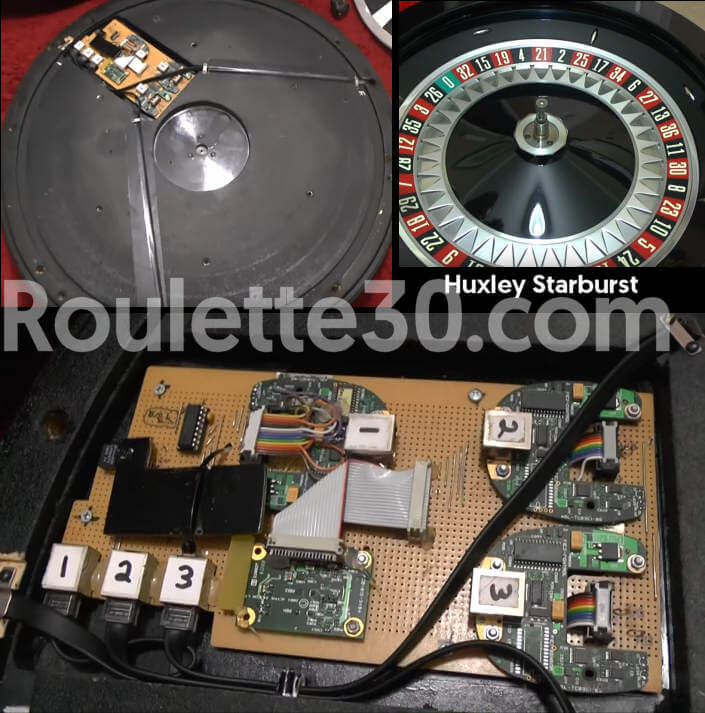
Huxley Starburst roulette wheel disassembly. The computer hidden on the wheelbase, is connected with “discreet” built-in sensors, for a range of wheel diagnostics and reports. Detection of winning numbers. ‘Drop Zone Detection’ of non-random results. Data Logger stores up to 6 years’ worth of wheel events.
Roulette Wheel Construction and Trustworthiness
There are some basic requirements for the construction of a professional roulette wheel and these are as follows:
- The wheel should have its weight distributed evenly throughout.
- The wheel and ball must be constructed of non-magnetic substances to prevent interference from magnetic sources.
- The cylinder should rotate and move freely of its own accord, but all affixed parts of the roulette wheel must be secure and free from movement.
The numbered pockets on the wheel must be built using the following rules:
a. Each compartment (pocket) has precisely the same dimensions compered to all other compartments.
b. They are evenly spaced.
c. They allow the roulette ball to land and rest easily and smoothly within the compartment.
When one of these conditions is not met 100%, then we have either an intentionally rigged wheel, or a biased wheel, that has slipped the attention of the casino. Some expert players could take advantage over defective wheels.
Below the ball track and above the numbered pockets there are usually 8 or 16 ball deflectors, also called canoe stops or diamonds, because of their shape. The ball bumps into one or more of them when it leaves the ball track. They change the speed and sometimes the direction of the ball before it lands on a number. Deflectors help make outcomes more unpredictable.
Gammegh has recently developed a patented technology called Random Rotor Speed or RRS. RSS is an optional security upgrade for the Mercury 360 roulette wheel. It uses a contactless technique to randomly and imperceptibly change the speed of the rotor after a game has started.
Theoretically, the point of RSS is to deter expert players from gaining an advantage by using roulette computers or dealer’s signature (metronomic dealers) techniques.
Although it’s described as a security feature, somehow affecting the rotor speed is viewed by many roulette players with suspicion. Now that casinos can change the speed of the rotor, what else could it do?
We did a little research on the trustworthiness of Electronic Airball roulette wheels (automated rapid roulette).
It’s interesting to note that it’s possible to mix and match roulette parts from different manufacturers.
For example, it has been reported, that casinos using the “suspicious” Gammegh RRS roulette wheel mechanism, have replaced the original roulette turret with one bearing the more reputable John Huxley name. The branded turret gives the impression that the wheel is made by John Huxley and hides the fact that it uses the RSS technology.
Types of Roulette Wheels
Those who know the game of roulette inside-out go to great lengths to try to increase their profit margin. One way is by trying to find the best roulette wheels. There’re many theories regarding what methods are worth trying to try and gain an (unfair) advantage over the house, but some conclusions are worth considering.
The large number of roulette wheel manufacturers explains why there’s such a huge diverse range of roulette wheels and this explains why the pockets are so different.
A recent new trend – seen in many casinos – is the use of shallow pocket pads on roulette wheels. This leads to wide ball scatter thus making it even more difficult to predict where the ball might land. The pockets themselves can either be, forged into a metal block or divided through the smart use of metal frets (separators).
Most roulette wheels feature even frets that have the same height at both ends, but there’re also wheels where the frets drop towards the centre. It’s harder to anticipate where the ball will eventually land, as it can easily jump the narrow gap to the next number.
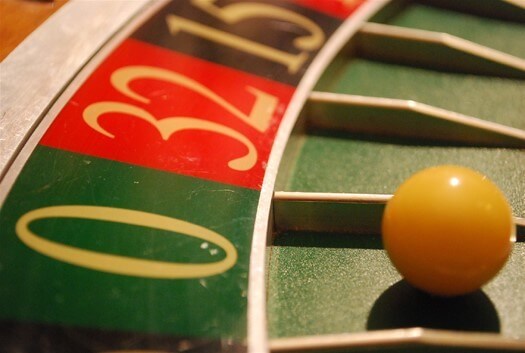
Notice the fret decline towards the centre of the wheel. One of the 1st wheels created in roulette wheel history.
Small yet even frets are more common, and such wheel types is favored by land-based casinos because they create a more tense game.
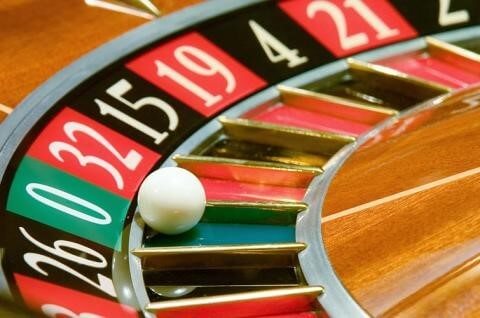
Roulette balls jump easily and even if they initially hit a pocket, players would be wrong to assume that they’ll remain in place. The higher the frets, the more unlikely balls will jump.
Low frets on roulette wheels are designed to cause the ball to jump out of one or more numbers erratically before finally landing in a pocket. Whereas with tall frets, the ball is more inclined to remain in the first pocket it lands in.
Another type of roulette wheel that doesn’t favour the ball jumping is the one featuring curved frets. This is a compromise, because the ball can easily move from one number to another in a seamless manner, without staying in the pocket where it first landed.
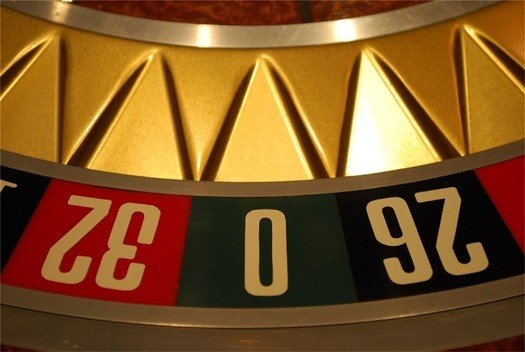
With the TCS Huxley Starburst wheel, the ball doesn’t “jump” as high as seen on other wheels. Although it does tend to bounce a great deal and does not remain on a pocket it first lands on.
A couple of roulette wheels don’t have curve frets but instead feature curved pockets which cause to create a similar random outcome. The main difference resides in the fact that players don’t notice any sort of bouncing.
This means they’re just as powerless when it comes to predicting where the ball might land. These sort of wheels are less common but are gaining traction quickly and we can expect more of them to appear in bricks-and-mortar casinos.
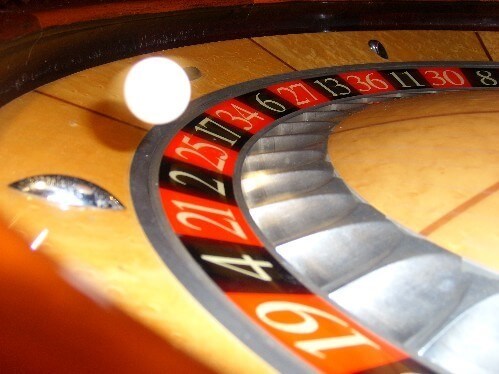
This is a Cammegh Wheel with scalloped pockets. Ball “jumps” are minimal though the scatter is actually quite large. The wheel is in use at the Venetian and MGM casinos.
Roulette wheel manufacturers are looking for new ways of altering the roulette wheel without changing the game itself. Keeping it fair is mandatory, but they enjoy a lot of freedom when tinkering with pocket sizes and shapes as well as redesigning frets.
The visual effect is interesting, but it represents only the tip of the iceberg. Each type of roulette wheel and each variation can cause the way the ball lands to vary in style. Roulette is still just as unpredictable as ever, but this won’t stop pundits from trying to find patterns.
Deceleration Rates and the Effect on Gameplay
Roulette has been around for centuries, and the game is here to stay, which makes it only fair to assume that players will keep trying to win betting on roulette. Throughout roulette’s history many have tried to discover winning patterns or ways to exploit the game’s flaws.
Nowadays given roulette manufacturers have high-tech instruments, roulette wheels are equally precise tools that don’t age easily and don’t malfunction very often. Technology has solved most of the issues that kept casino owners awake at night. However, there’re new challenges such as dealing with roulette deceleration.
The name is self-explanatory and has to do with the ever-decreasing speed at which the roulette ball travels across the wheel, until it stops in its temporary resting place.
Roulette wheel manufacturers are doing their best to produce roulette wheels that have no slow down, and their efforts are much appreciated by dealers. Huge progress has been made and so now the latest wheels are virtually unaffected by deceleration.
Over the internet, this is not a concern for anyone as the wheels are in fact computer software at work. But land-based casino owners have other ideas. Slow down makes it difficult for professional roulette players to extract the most from their roulette betting systems, therefore casinos love it.
Deceleration is inevitable as roulette wheels age, so as far as casinos are concerned, time is always on their side and against system players.
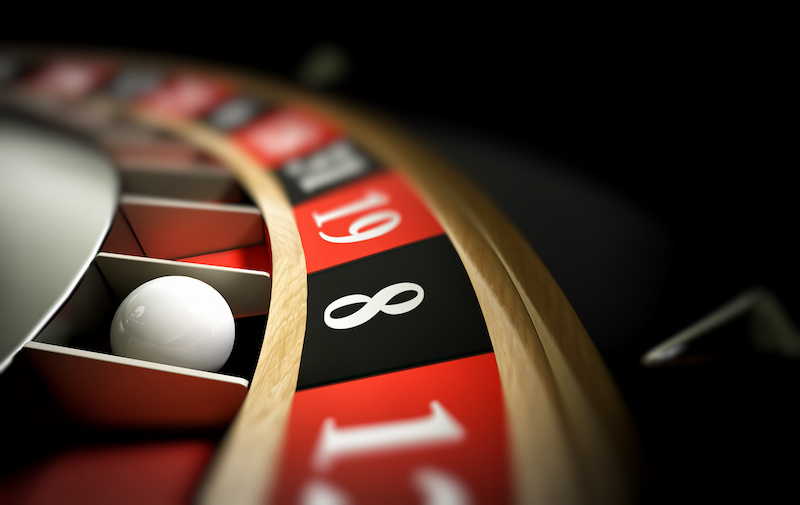
The Roulette Ball
Roulette balls are proportional to the dimensions of the wheel and the numbered pockets they land in. Serious casinos use large wheels with a diameter equal to 27, 30 or 32 inches. Accordingly, the balls used are 18mm and 21mm.
Traditionally, in order to make the outcomes even more unpredictable, they alternate between one “small” (18mm) and one “big” (21mm) ball once a day, with the non-playing ball resting on top of the centre of the roulette, patiently waiting for its turn.
Top quality older roulette balls are made of ivory. Today’s balls are called “ivorine” and are not made by real ivory; they’re actually synthetic and resemble the look and feel of ivory.
In recent years, professional roulette balls are also made of other materials such as, resin, Teflon and even ceramic. The differences in dimensions, weight and material of balls have a noticeable impact on the game.
There’s a stark difference between a small ceramic ball and a bigger ball made out of ivorine. For instance, a small, light ceramic ball generates higher revolutions around the wheel track. Then when it falls and jumps about it creates a higher level of unpredictability before landing in a pocket.
It’s in the best interests of the casinos to use anti-magnetic and unpredictable balls in order to deter advantage players. There’ve been some recent anecdotal reports about piezoelectric roulette balls used in rigged roulette games.
When you know how many numbers on a roulette wheel there are, you’ll know that fewer means a lower house edge. Playing on a single-zero roulette game doesn’t guarantee you more wins. It means that the expected value for the house is less than what casinos can expect from players betting on American roulette wheels.
Roulette Questions & Answers
Is roulette 100% luck?
The outcome of what roulette wheel numbers will hit is random (100% luck) due to the way games are designed to operate. Unless you have mental skills able to predict where the ball will land on a roulette wheel (when it is still spinning and whilst you’re still allowed to place bets) then your chances of winning boil down to sheer luck. When learning how to play roulette, it's important to understand the randomness of the game.
What is the best trick in roulette?
Money management is the most effective trick when betting on roulette wheel numbers. Not risking more money than your planned budget allows is key to enjoying roulette. The best trick in roulette is to quit when you’re ahead. The next best trick in roulette is to stick to even-chance bets on a single-zero roulette wheel if possible.
Is roulette 50% chance?
It’s important to understand roulette wheel odds because roulette is not a 50% winning chance game. The odds of you winning an even-money (‘outside bet’) roulette game that pays out 1:1 is based on how many numbers on a roulette wheel there are.
There’s a higher house edge on a double-zero roulette wheel (38 numbers) and a lower house edge on a single-zero roulette wheel (37 numbers).
Put simply, if you win an even-money outside bet you’ll double your wager. But depending on the roulette wheel variant you play on; your chance of winning is based on the following probabilities:
- 48.65% chance of winning an outside bet on single-zero European roulette wheel games.
- 47.37% chance of winning an outside bet on double-zero American roulette wheel games.
Is roulette gambling?
If you bet on games of chance for money, then this is gambling. And since the outcomes of roulette games are chance based then betting on roulette wheel numbers for real money is gambling.
What is 2 to 1 in roulette?
Betting on almost one third of the roulette wheel numbers that totals 12 numbers is rewarded with a 2-to-1 payout. You can choose any 12 numbers or bet on an outside 2-1 chance bet.
There are six 2-1 outside chance betting options. These are, Dozen bets and Column bets.
2-1 Dozen bets in roulette:
The three possible 2-1 Dozen bets are 12 numbers in the following boxes:
- The 1ST 12 box (includes roulette wheel numbers 1 to 12);
- 2ND 12 box (numbers 13 to 24);
- 3RD 12 box (numbers 25 to 36).
2-1 Column bets in roulette:
The three possible 2-1 Column bets are 12 numbers across the longest (or horizontal) area of the betting layout:
- Covering 12 numbers from #1 in a straight line over to #34
- #2 to #35 and all 10 numbers in a straight line in-between.
- #3 to #36 and all 10 numbers in a straight line in-between.
Payouts and odds for 2-1 roulette bets explained:
- For 2-1 outside bets: 1 chip on a winning 2-1 outside bet will return 3 chips i.e. 2 winning chips on top of the 1 chip staked.
- Where a player bets an equal chip value on 12 individual straight-up numbers (including any green zero or double zero) the payout odds will be 35-1. This means, if you bet 12 chips and one of your roulette wheel numbers is the outcome, you’ll be paid 35 chips and get to keep the 1 chip staked on the winning number. Thus, total of 36 chips returned less 12 chips staked = 2-1.
- You have an almost 1 in 3 chance of winning. This equates to a 32.40% chance of winning a 2-1 bet on a single-zero European roulette wheel and 31.6% chance of winning on a double-zero wheel.
Is roulette a skill game?
The outcome of all bets on roulette games is based on chance and not skill. If you look at how many numbers on a roulette wheel and how games operate, the logical conclusion is that outcomes on a roulette wheel are determined by chance and not skill.
